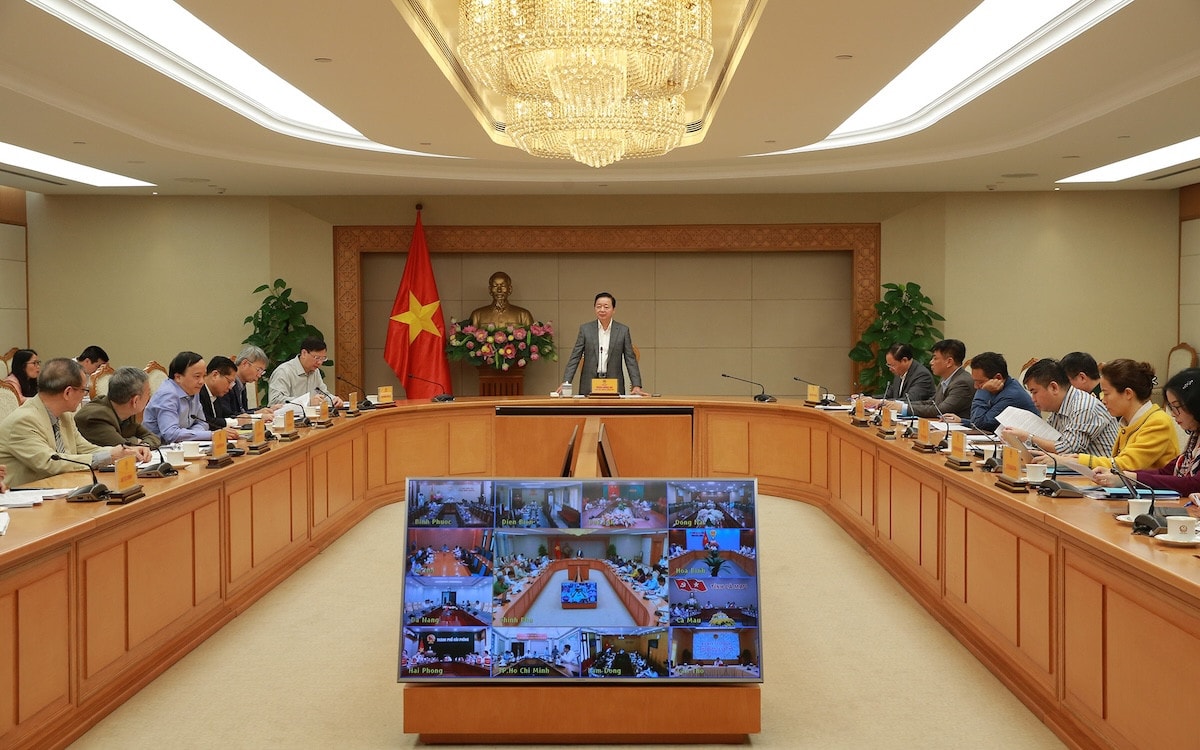Deputy Prime Minister Tran Hong Ha assigned the Ministry of Agriculture and Environment to calculate the 'transitional phase' for current land use plans and projects when the district level is abolished.

On March 28, Deputy Prime Minister Tran Hong Ha chaired a meeting with ministries, branches, and experts, connecting online with localities on the plan to adjust the national land use planning for the 2021-2030 period, with a vision to 2050.
At the meeting, the Deputy Prime Minister emphasized the need to change the previous approach, basis, and thinking about development space for national land use planning in the context of streamlining the organizational apparatus, changing and merging local administrative boundaries, and the target of double-digit growth.
Priority given to infrastructure, industrial, service and urban development
At the meeting, Deputy Minister of Finance Bui Van Khang stated that based on the double-digit growth target, priority should be given to industrial, commercial and service land funds and decentralization to localities should be promoted.
Meanwhile, Deputy Minister of Agriculture and Environment Le Minh Ngan said that the national land use planning is adjusted to prioritize the development of a synchronous infrastructure system, industry, services, and urban development, while maintaining a reasonable area of rice-growing land to ensure national food security and flexibly converting low-efficiency land areas.
It is expected that by 2030, the area of agricultural land will be nearly 26.8 million hectares (a decrease compared to the approved plan of about 0.95 million hectares).
Of which, rice land of more than 3.34 million hectares (a decrease of about 0.21 million hectares) provides 39.47 million tons of rice/year compared to the low demand for ensuring food security by 2030 of 33.73 million tons of rice/year.
Forest land remains at about 15.5 million hectares (a decrease of about 0.35 million hectares), ensuring a forest cover rate of 46.78%, 4.78% higher than the target set in the Resolution of the 13th Party Congress (42%).
The non-agricultural land group by 2030 is about 5.83 million hectares, an increase of about 0.94 million hectares.
Strong local decentralization

Based on the guiding principle of not allowing the situation of "not knowing, not being able to manage, then banning" to happen, while creating space for development and creativity for localities in the spirit of "locality decides, locality does, locality takes responsibility", the Deputy Prime Minister requested the Ministry of Agriculture and Environment to continue to preside over and work with ministries, branches and localities to unify plans for adjusting land use indicators.
Including calculating the transitional period of using planning and land use plans when there is no longer a district level as well as the responsibilities, authority and tasks of provincial and commune level authorities.
At the same time, develop mechanisms and principles to adjust land use targets in case localities complete mergers.
The Deputy Prime Minister also proposed to innovate the thinking of agricultural land management towards applying technology, ensuring food security and climate change. Rice land can be converted to aquaculture, vegetable and fruit growing for higher economic efficiency.
For industrial land, the Deputy Prime Minister requested land allocation according to the principle of private land allocation.
In addition, the Deputy Prime Minister noted the need to review classification criteria to manage and separate forestry land for growing industrial crops from forestry land covered by forests.
PV (synthesis)